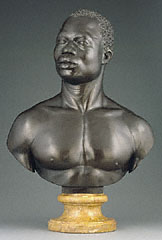 |
||
These lessons and materials focus on the artistic
movement known as Neoclassicism and its relationship to the historical and cultural movement called the Enlightenment.
In Europe and America, the Enlightenment coincided with the first half of the Neoclassical period. Beginning around
1750, it was a time when the influence of philosophical theory and political revolution had unprecedented international significance.
During this period, Neoclassicism and the Enlightenment were different, but intertwined movements. Neoclassicism was an artistic manifestation of aesthetic
and cultural ideals, while the Enlightenment was a wider philosophical and political movement focusing on the human condition.
The collection of Neoclassical artworks at the J. Paul Getty Museum spans the period from the mid-18th century through the beginning
of the 19th century. The lesson plans explore ten objects and cover visual arts, language arts, and social science content standards
for grades seven through 12. Connections to national and California state standards are listed in a chart. Lessons are designed to
be flexible so that teachers can modify them to meet the needs of their students.